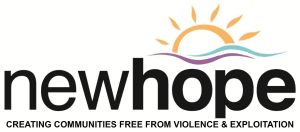Domestic violence is often called a hidden epidemic, occurring and affecting individuals and families behind closed doors. In truth, domestic violence is a public health epidemic affecting individuals, families and communities. Domestic violence is not biased – it exists regardless of age, gender, sexual orientation, religion or nationality. The National Coalition Against Domestic Violence (NCADV) defines domestic violence as “the willful intimidation, physical assault, battery, sexual assault, and/or other abusive behavior perpetrated by one intimate partner against another. It includes physical violence, sexual violence, threats and emotional abuse.”
Consider the following statistics regarding domestic violence in the US:
- Every nine seconds, a woman is assaulted in the United States – more than three women are murdered at the hands of an intimate partner everyday
- An estimated 42.4 million women in America have experienced rape, physical violence and/or stalking by an intimate partner in their lifetime
- 3.2 million women have experienced severe physical abuse by an intimate partner
- Domestic violence is most common among women between the ages of 20-24
- Domestic violence is the leading cause of injury to women – more than car accidents, muggings and rapes combined
- According to the U.S. Department of Housing and Urban Development, domestic violence is the third leading cause of homelessness among families
The statistics alone are eye opening but it is important to acknowledge that due to under-reporting, the actual numbers are most likely significantly higher.
Recent events have elevated national attention after high-profile abuse incidents in the NFL, this as October, Domestic Violence Awareness Month, is set to begin. As an agency committed to Ending Domestic and Sexual Violence, we plan to offer a series of blogs to educate and to spread awareness about impact of domestic violence in our communities, including the effects of domestic violence on children, warning signs of an abusive relationship and ways to engage those who are victims of violence. Look for our blogs in the coming weeks and be sure to share with your family, friends and social networks.
If you or someone you know is in an abusive relationship, call our Toll-Free, 24-Hour Hotline at 800-323-HOPE (4673).
For additional resources about domestic and sexual violence, visit www.new-hope.org/get-the-facts/
Supplementary References:
